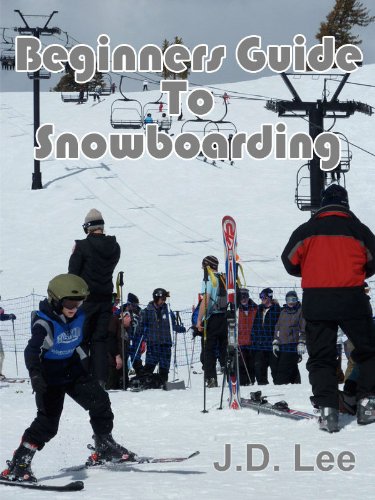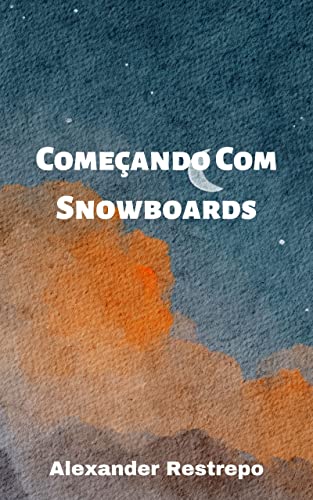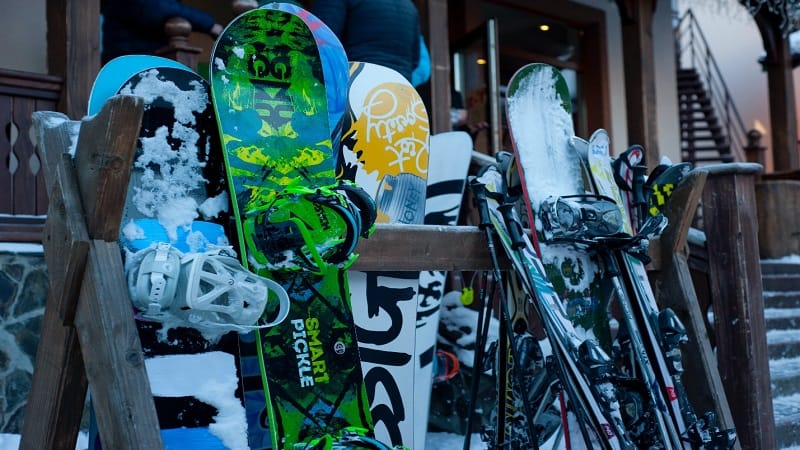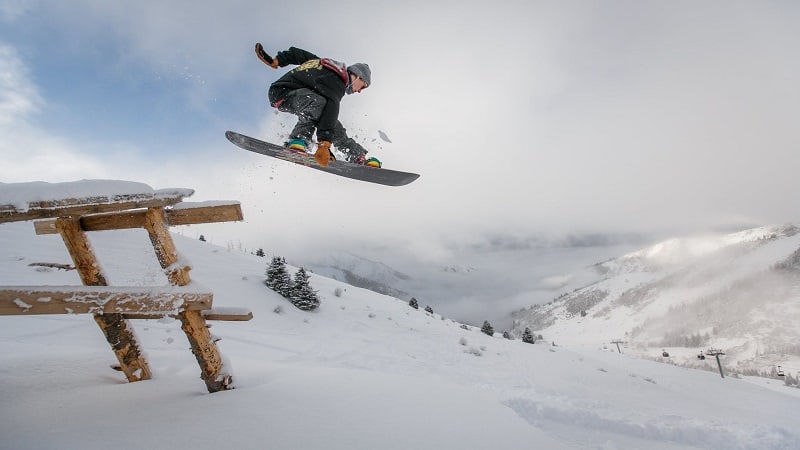Ever dreamt of carving up the mountain, wind in your face, snow beneath your board? No worries, we’ve got you covered! Learning to snowboard can seem daunting at first. But hey, don’t sweat it; everyone starts somewhere, right? Let’s break down this seemingly complex sport into simple steps that’ll have you hitting the slopes with confidence before you know it.

You’ve probably seen those daredevils on TV effortlessly sliding down mountains and thought to yourself, “I wish I could do that!” Well, guess what? You absolutely can. Snowboarding isn’t just for adrenaline junkies or winter sports pros – it’s a fun and accessible activity everyone can enjoy. With some patience, practice and our handy guide, YOU’LL be that person impressing friends with your new skill.
So buckle up your boots (or rather strap in your bindings), because we’re about to dive into the basics of snowboarding. From selecting gear to mastering essential moves like stopping and turning – we’ll navigate through each aspect together. Whether you’re an absolute beginner or looking to polish your shredding skills – we promise this journey will be a thrilling ride!
Understanding the Basics of Snowboarding
First things first, let’s talk gear. You’re going to need a good snowboard. Now, you might be thinking, “What makes a ‘good’ snowboard?” Well, for starters, it should match your height and weight. While there’s no one-size-fits-all formula here, as a beginner you’ll likely want to start with a softer board as it will be easier to control.
Next up is your stance. Are you goofy or regular? Don’t worry – we’re not questioning your sanity! These terms refer to which foot you lead with on the board. Regulars ride left foot forward while goofies ride right foot forward. If you’re unsure about this one, think about which foot you’d naturally put forward if someone were to push you from behind – that’s usually your leading foot.
Now let’s talk moving and stopping – two pretty crucial skills in snowboarding! To make yourself move (or slide down the hill), lean slightly forward allowing gravity do its thing. Don’t lean too far though; otherwise, you’ll end up face-first in the snow! As for stopping – or ‘braking’ – shift your weight onto your back foot and point the front of the board uphill.
Snowboarding turns are all about shifting your weight from one side of the board to another – sounds simple enough right? But remember – practice makes perfect! Start by practicing heel-side turns (where you lean back onto your heels) before moving onto toe-side turns (leaning forwards onto your toes).
Finally we have falls because let’s face it – they’re part of learning any new sport! The key here isn’t so much avoiding them entirely but learning how to fall safely. Try not to break your fall with outstretched hands as this can lead to wrist injuries – instead aim for controlled tumbles where possible!
Remember everyone learns at their own pace and it’s okay to take your time. After all, even the best snowboarders had to start somewhere!
Choosing the Right Snowboarding Gear
Alright, let’s dive straight into it! The first step in your snowboarding journey is choosing the right gear. It’s not just about looking cool on the slopes (though that’s a nice bonus!), it’s also about safety and comfort. You’re going to need a board, boots, bindings, helmet and some warm clothing.
Now, picking out a snowboard might seem like an easy task but there’s more to consider than you might think. Your height, weight and shoe size all play a role in determining the right fit for your board. And don’t forget about your skill level! Beginners often find softer boards easier to handle while more advanced riders may prefer stiffer boards for their responsiveness.
When you’re selecting boots, remember that comfort is king here. Ill-fitting boots can turn what should be an exhilarating day on the mountain into an uncomfortable ordeal. Take time to try on several pairs before making your choice – it’ll pay off in the long run!
Next up are bindings – these gadgets connect your boots to your board and can greatly impact how well you control your ride down the slope. There are different types of bindings so do some research or ask a pro at your local sports shop for advice.
You’ve probably seen those gnarly crashes on TV – trust me when I say, helmets aren’t just for show! Protecting yourself from potential injuries is crucial when learning any new sport and snowboarding is no exception.
Finally, we get to clothing: layers are key here folks! You want breathable material near your skin with insulating layers over top followed by water-proof outerwear. But remember not all clothes are created equal – look for items specifically designed for winter sports as they have features like sealed seams and special pockets which will make all difference during those hours spent outside in chilly weather conditions.
Remember everyone – safety first then fun!
Step-by-Step Process: How to Mount Your Snowboard
So, you’ve decided to plunge into the thrilling world of snowboarding. Awesome choice! But before you hit the slopes, there’s something crucial to master – mounting your snowboard. Don’t worry, I’ll walk you through it.
First off, let’s understand the essentials. Your snowboard has two bindings where your boots will snugly fit in. There are different types of mounts like 2×4 and 4×4 patterns but we’ll stick with the most common one – the 4×4 pattern for this guide.
Here’s a simple step-by-step process:
- Identify your lead foot: It’s essential to know which foot leads when you’re sliding down those snowy slopes. If it’s your left foot that goes first, you’re regular-footed and if it’s right then you’re goofy-footed.
- Positioning your bindings: The binding for your lead foot should point towards the board’s tip while the other faces slightly towards the tail end.
- Adjusting angles: For beginners, a good starting point would be having a lead foot angle around +15 degrees and back foot angle at about -5 degrees.
- Screw them tight: Once adjusted correctly, tightly screw each binding into place using hardware provided with your board.
There! You’ve mounted your snowboard!
Now remember, these are just basic steps and might need some tweaking based on individual comfort and riding style.
Take time practicing this setup until it feels natural underfoot because trust me; nothing beats an accurately mounted snowboard when carving down those beautiful white mountains! Happy boarding!
Mastering Fundamental Snowboarding Stances for Beginners
Let’s dive right in, shall we? The first stance you need to nail down is the basic snowboarding stance. Stand with your feet shoulder-width apart, knees slightly bent, and weight evenly distributed on both feet. This will be your home base – a comfortable position that allows for balance and control.
Next up is the athletic stance. Think of it as if you’re about to catch a ball thrown at you. You’d instinctively bend your knees and hips slightly while leaning forward a bit, right? That’s exactly what you should do on your board! It allows for quick movements and turns.
Now onto some specifics:
- Regular or Goofy: Simply put, if you feel more comfortable with your left foot leading, that’s called ‘Regular’. If it’s the other foot out front (right), then you’re ‘Goofy’. There’s no right or wrong here; just go with whatever feels natural!
- Heel Edge and Toe Edge: These are two fundamental stances in snowboarding involving shifting weight onto either the heels or toes respectively while keeping the torso upright. They’re crucial for steering and stopping.
Enough theory though; let’s talk practice! Spend time getting used to these stances off the slopes before trying them out on real snow. Remember: repetition breeds familiarity.
In case numbers are more up your alley, check this out:
| Stance | Feet Position |
|---|---|
| Basic | Shoulder Width Apart |
| Athletic | Slightly Bent Knees & Hips |
| Regular/Goofy | Left Foot/Right Foot Leading |
| Heel Edge & Toe Edge | Weight Shifted Onto Heels/Toes |
Experience plays a key role in mastering these stances. So don’t get disheartened if they seem tricky at first glance! Keep practicing and soon enough, they’ll be second nature. Stay tuned for the next section where we’ll delve into ‘Snowboarding Equipment Essentials’. Until then, happy practicing!
Learning Basic Snowboarding Techniques and Tricks
Snowboarding, huh? You’re in for a wild ride! But don’t worry, you’ll get the hang of it. Let’s dive right into some basic techniques and tricks that’ll help you build your snowboarding skills.
First off, it’s all about balance. When you’re starting out, one of the most important things to master is keeping your weight centered over your board. Lean too far forward or back, and you’ll find yourself eating snow before you know it!
Next up: carving. This technique involves making S-shaped turns by shifting your weight from heel to toe. It sounds tricky but with practice becomes second nature. Just remember: when carving down a slope, always keep your knees slightly bent and look where you want to go.
Now let’s talk tricks for beginners – because hey, we all want to show off a little! The “Ollie” is a fundamental trick that every boarder needs under their belt – it’s all about popping the tail of the board off the ground while jumping upwards with both feet. Another fun beginner-friendly trick is the “Nose Roll”. Here’s how it works: while moving slowly on flat terrain, press down on the nose of your board until the tail lifts off; then spin 180 degrees and voila!
But what if I told you there’s even more? That’s right! There are countless other tricks like:
- Tail Grabs: Reach behind and grab hold of the tail-end of your snowboard mid-air.
- 50/50 Grinds: Slide along rails or boxes with both feet strapped onto the board.
- Board Slides: Similar to a grind but here, instead of sliding straight ahead over an object (like railings), slide sideways across them.
Remember though: Rome wasn’t built in a day – neither will be these skills! Don’t rush yourself, take your time. Safety always comes first, so make sure you’re comfortable with the basics before attempting any tricks. Happy boarding!
Safety Measures for Beginner Snowboarders
Embracing the thrill of snowboarding is a fantastic adventure. However, it’s crucial to put safety first. Let’s talk about some essential safety measures for beginner snowboarders.
First off, gear up appropriately! Your outfit isn’t just about looking cool on the slopes. Helmets are a must-have. They significantly reduce the risk of head injuries which account for up to 20% of all snow sports-related injuries according to a report by the National Ski Areas Association (NSAA) in 2019.
| Gear | Importance |
|---|---|
| Helmet | Protects your head from injury |
| Goggles | Shields your eyes against wind and UV rays |
| Padding | Reduces impact on knees, hips and elbows |
Next, remember that knowing how to fall is half the battle won. It sounds odd but trust me, there’s an art to falling safely when you’re strapped into a board. Try to relax your body during a fall and roll onto your forearm rather than sticking out your hand.
Don’t shy away from lessons either! You might think you’ve got it nailed after watching some online tutorials but there’s no substitute for hands-on instruction from professionals who can give you real-time feedback.
Finally, be mindful of where you’re venturing! Stick with marked trails especially as a beginner. Unmarked areas could have hidden obstacles or sudden drops that can catch a newbie off guard!
Stay safe out there as you embark on this exhilarating journey towards becoming an awesome snowboarder!
Progressing Your Skills: Tips to Improve in Snowboarding
Snowboarding isn’t just about speed and adrenaline. It’s also about finesse and skill, two aspects that you’ll need to work on if you’re looking to progress. The first thing you should focus on is your stance. Getting your position right can make a world of difference when it comes to performance.
- Start by aligning your body with the board properly. Your shoulders, hips, and feet should all be parallel with each other.
- Distribute your weight evenly between both feet and try not to lean too much forward or backward.
Another big part of progressing in snowboarding is learning how to turn effectively. Turns are essential for navigating slopes and avoiding obstacles.
- Practice makes perfect here! Start by trying out gentle S-shaped turns, gradually increasing their sharpness as you gain confidence.
You might be tempted to keep using the same slopes over again because they’re familiar territory but breaking away from that routine can help your skills grow faster than you’d think.
- Exploring different types of terrain will expose you to new challenges, forcing you into adapting your technique accordingly.
And let’s not forget about equipment! You wouldn’t believe how much a well-maintained board can impact your performance.
- Regularly check up on the condition of your gear and don’t hesitate investing in quality pieces when necessary – it’ll pay off in the long run!
Lastly, remember that patience is key when trying to improve at anything – snowboarding included! Keep practicing regularly, take breaks if needed but never give up because progress often comes in small but steady steps. Before long, all those hours on the slope will start showing results.
Conclusion: Starting Your Journey in Snowboarding
You’re finally ready to carve your own path on the snow. It’s been a fun ride learning about snowboarding, hasn’t it? You’ve gained knowledge about everything from the right gear to the basic techniques. Now you are set to hit the slopes and start your thrilling journey.
Remember, everybody starts somewhere. Don’t be disheartened if you don’t nail all the moves right away. Practice makes perfect! Every fall is just another step closer to mastering this awesome winter sport.
As a beginner, sticking with simple runs at first is a wise move. As your confidence grows, try tackling more challenging slopes bit by bit. Remember – safety should always come first!
It may seem overwhelming now but trust us, every time you strap on that board it’ll get easier and more fun. So go ahead and embrace the adventure that awaits you on those glistening white slopes.
Here’s a quick recap of key points for starting your journey in snowboarding:
- Choose comfortable and safe gear
- Learn and master basics before trying complicated maneuvers
- Always prioritize safety over thrill
- Practice regularly to improve
Snowboarding isn’t just about speed or tricks; it’s an exhilarating experience connecting you with nature in its rawest form – crisp air, stunning views, and breathtaking runs down snowy mountainsides.
So what are you waiting for? Grab your board and let’s ride! The mountains are calling!
















